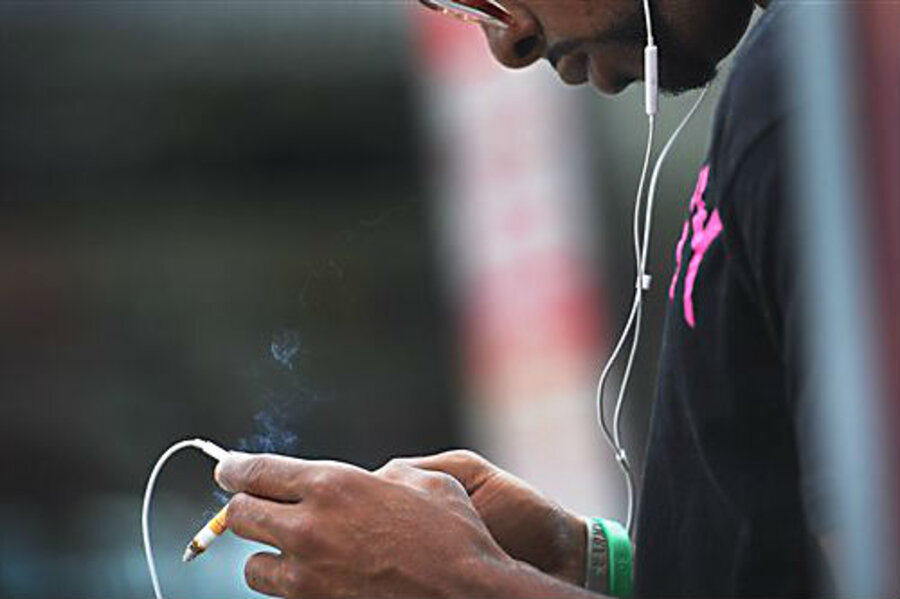Why WHO calls for indoor ban on e-cigarettes
Loading...
| Geneva
The U.N. health agency recommended Tuesday that nations regulate electronic cigarettes and ban them from use indoors until the exhaled vapor is proven not to harm bystanders.
In a report to its 194 member nations, the World Health Organization also called for a ban on sales to minors of the popular nicotine-vapor products, and to either forbid or keep to a minimum any advertising, promotion or sponsorship.
The Geneva-based agency said the "apparently booming" $3 billion global market for more than 400 brands of e-cigarettes is increasingly becoming a competition between independent companies and transnational tobacco companies aggressively muscling for market share.
The rapid growth of e-cigarettes' use globally means appropriate regulation is needed, the WHO said.
Regulation "is a necessary precondition for establishing a scientific basis on which to judge the effects of their use, and for ensuring that adequate research is conducted and the public health is protected and people made aware of the potential risks and benefits," the report said.
The report is to be discussed at a WHO conference on the public health treaty for controlling tobacco that is scheduled to be held in Moscow in October.
A day earlier, the American Heart Association urged more regulation particularly to keep them out of the hands of young people and said it supported the use of the battery-powered devices that vaporize nicotine only as a last resort to help smokers quit.
Little is known about the health effects of e-cigarettes, which have been sold in the U.S. since 2007 and contain less toxic substances than traditional cigarettes do. U.S. regulators in April proposed treating e-cigarettes as tobacco products with rules such as a ban on sales to those under 18 and warning labels.
The Christian Science Monitor reported in November 2013 that more US school children are using e-cigarettes:
Use of tobacco among high school students fell from 24.3 percent in 2011 to 23.3 percent in 2012. Among middle-schoolers, the drop was from 7.5 percent to 6.7 percent. But shifting trends among less common products have focused attention on electronic cigarettes – smokeless nicotine vaporizers whose use nearly doubled among teens in just one year, the CDC reported.
It's still a small sliver of teens who use e-cigarettes – 1.1 percent of middle-schoolers and 2.8 percent of high schoolers – but the tobacco-less cigarettes are almost unregulated because they are not classified as "a tobacco product." Some public health experts speculate that teens may perceive them as safer than traditional cigarettes, and that marketing is raising teen awareness of e-cigarettes.
Elsewhere, sales are banned in 13 of the 59 countries that regulate the devices, the WHO reported, but most of those 13 countries say they are still available because of illicit trade and cross-border Internet sales.
Copyright 2014 The Associated Press. All rights reserved. This material may not be published, broadcast, rewritten or redistributed.





